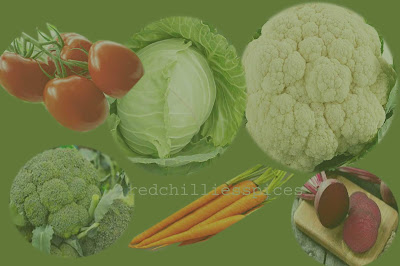Dry Manchurian Recipe (cauliflower) :
Preparation Time: 30 minutes
Today we will make Cauliflower Manchurian
which is very tasty to eat and you can make it whenever you want. It can be
made both dry and wet. Today we will make dry Manchurian. Now whenever guests
come to the house or if you want to make something different in the evening,
make it and feed everyone hot.
Essential Ingredients for Cauliflower
Cauliflower -2 - medium chopped
flowers
Refined flour - 1/2 bowl
Cornflour - 1/4 bowl
Sugar - 1/2 tsp
Salt - 1/2 tsp
Black pepper powder - 1/4 tsp
Red Chilli Sauce - 1/2 small spoon (if
you want)
Oil - for frying Cauliflower
Essential Ingredients for Sauce
Onion - 1 medium finely chopped
Green chili - 1 finely chopped
Garlic - 1 small spoon chopped or paste
Ginger - 1 small spoon chopped or paste
Green onion - 1 tbsp chopped (if you
want)
Soya Sauce - 2 small spoon
Tomato sauce - 1 small spoon
Black pepper powder - 1/4 tsp
Red Chilli Sauce - 1/2 small spoon (if
you want)
Corn flour - 1/2 small spoon
Oil - 2 tsp
How to make dry Manchurian
First, we make sausages for the Manchurian,
after that, we will fry the Cauliflower. Take out all the ingredients for the
sauce. (Even if you do not have green onions and red chili sauce, you can make
it, we just add it to add flavor).
Take 2 small spoons of oil in a pan,
when the oil is hot, add ginger-garlic paste to it. When it is lightly
roasted, then add chopped onion and green chilies to it and fry it well.
After the onion is roasted, add all the
sausages (tomato sauce, chili sauce, soy sauce) and mix it well.
 |
| Frying onions, chilies and ginger garlic paste |
Now we keep it aside and prepare Cauli
flower.
Take all the ingredients for the Cauli
flower and mix it well.
Now slowly add water and prepare the
batter. Do not wet the solution too much and do not bury it. The solution
should be wrapped on the Cauliflower and make a thin layer. Now put all the
chopped Cauliflower in the solution and mix it well with your hand.
When the Cauliflower mixes well in the
solution, then place it one by one in the hot oil. Keep in mind that your oil
is not too hot or else the Cauliflower will remain raw from inside. Fry the
cauliflower on medium gas. When the Cauliflower turns light brown then take it out and keep it on a paper.
Similarly, take out all the Cauliflower on the floor.
Now put the sauce we had made on the
gas. Add 1/2 tsp cornflour to 1/2 bowl of water. When cornflour mixes well in
water, then put it in the sauce. (By mixing cornflour with water, gravy becomes a
cart). Now put half the chopped green onion in it and save the rest for the
time of serving. Stir for 2 minutes and then add Cauliflower and mix well so
that the sauce is well wrapped on the Cauliflower.
 |
| Gobi Dry Manchuria |
Take your hot Cauliflower Manchurian
is ready. Add the remaining green onions and serve.
















